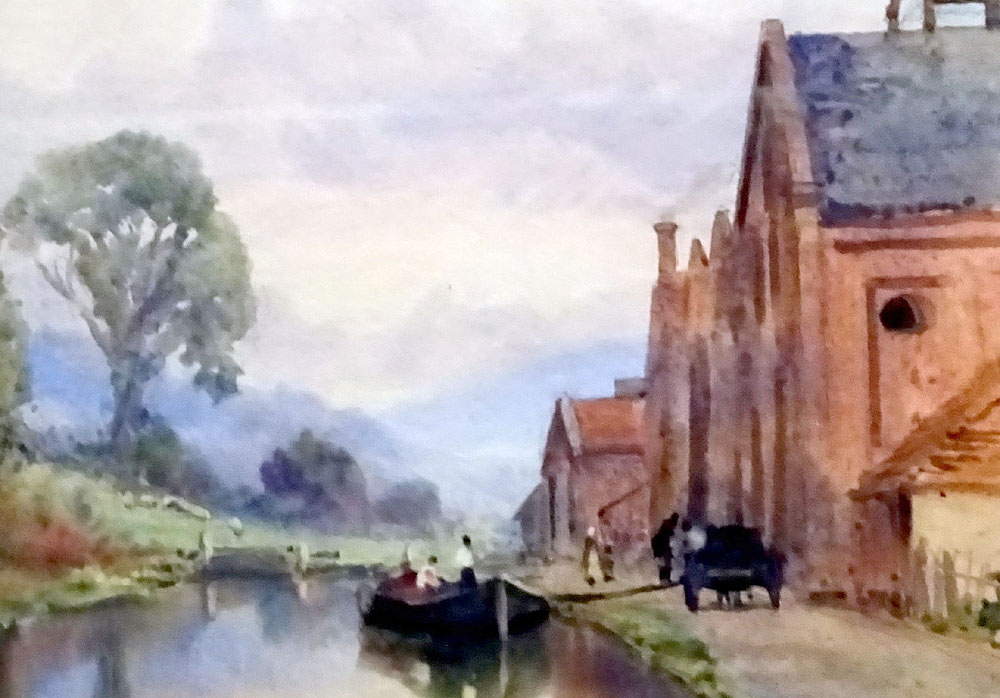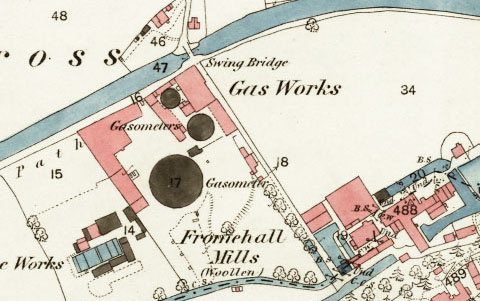

Stroud Gasworks was established beside the canal in 1833 and was expanded in the 1860s. It received regular shipments of coal brought from Newport, and coke and tar were taken away by canal. This painting by Miss J de M West shows how coal arriving by barge had to be discharged across the towpath by casual labourers who gathered there hoping to find employment when a barge arrived.
In January 1884, the top of the works chimney was blown down on to the roof of the engine house and retort house, and as the remainder of the chimney was in a dangerous condition, the manager fetched it down with a cavalry carbine!
Deliveries by water effectively ended when a coal-tipper from the nearby Stroud Branch of the Midland Railway was installed in the 1920s. For the full story of delivering coal to the gasworks, visit Coal to Stroud Gasworks.
The site of the gasworks has been cleared and is now occupied by local businesses.


Before the gasworks was built, this swing bridge was known as Fromehall Bridge as it provided access to Fromehall Mill to the south. Later it was known as Gas Works or Gas House Bridge, and the road to it was similarly named. After the gasworks was demolished, the residents of the road thought the old name devalued their properties and they persuaded the Council to change it to the present more pleasant name.
To the west of the gasworks, the map shows the buildings of Stroud sewage works which later included a refuse destructor (incineratior). In 1918, 57 boat-loads of ashes were sent to Chalford for a contractor based at Aston Down aerodrome. The gates to the refuse destructor are still in situ beside the towpath.
Nearby, Fromehall Mill is now occupied by a number of small businesses.
The two semi-detached houses and some land to the north of the bridge were bought by the Stroudwater Company in 1864 to provide a new coal wharf. This continued until 1911 when the two houses were sold to the Stroud Gas Co. The bigger house across the road was home to the manager of the gasworks.
Gasworks dates and damage to the chimney from the Stroud Gas Company's centenary booklet D2879/3/2.
How coal was discharged described in the memories of John Stockbridge.
Ashes to Chalford from C/CTS/4/3 8 Feb to 10 May 1918.
The start and end of Downfield Wharf and houses from D1180/2/77 and D1180/9/12 p155.